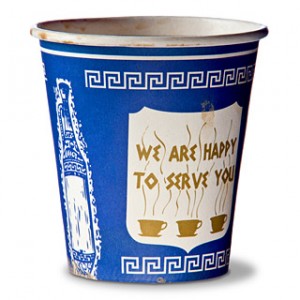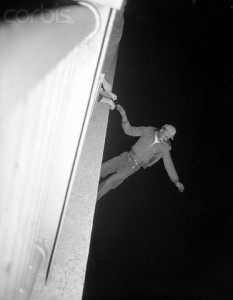In one of the great quirks of the American immigrant experience (think Chinese laundries, Indian motel monopolies, Korean grocers, etc.) Greeks have long been the dominant force in New York and New Jersey’s numerous diners and coffee shops and, in fact, in inexpensive dining establishments throughout the U.S. and Canada. The domination is so ubiquitous that the iconic New York take-out coffee cup was long emblazoned with illustrations of classic Greek art and architecture. Unlike fancy Greek fish restaurants (or traditional Greek restaurants), these diners and coffee shops are not gourmet destinations or particularly ethnic, but places where you can get a fast, square meal at a fair price. New Jersey’s Tick Tock Diner (famed for its “Eat Heavy” motto) has been in the news lately. Owned by a Greek family, the Tick Tock has never been a favorite of HG. However, its proximity to the Lincoln Tunnel and Meadowlands sports and entertainment complexes has made it popular (location, location, location). The news interest in the Tick Tock now is a case of murder. It seems the manager (relative by marriage) felt ill used by the head of the family (and Tick Tock boss) and hired a hit man to torture and kill the guy. As is often the case, the hit man was an undercover cop (with a nicely functioning) recording device. Too bad for the manager. HG’s favorite Greek greasy-spoon operator was Chris, a sweet, hard working guy who–some 60 years ago– ran a hole in the wall operation in the old Daily Mirror building at 235 E. 45th Street in New York. Chris had a thick Greek accent. This made him a favorite of Dan Parker, the Mirror sports columnist, who would often quote Chris as part of his humorous riffs on dialect. Chris fed the impecunious journalists, lithographers, pressmen and others who worked in the building the inevitable “cheeburger, cheeburger, cheeburger.” But, Chris also turned out great fried scallops and fried flounder. Splendid greasy French fries. Chicken livers and onions on rice. Other good things. Not too many vegetables, unless you count cole slaw as a veggie.
As a side note, it is fascinating that some of America’s great regional cooking from Cincinatti Chili to Rhode Island’s New York System wieners to Detroit’s Coney Island Hot Dogs can be directly traced to the blending of classic American food and traditional Greek flavor profiles (middle eastern spices, etc.).

